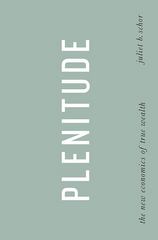Question
Q1 Based on evidence in reading 2, answer the following questions What is the difference in income between Millennials with a college degree and millennials
Q1
Based on evidence in reading 2, answer the following questions
- What is the difference in income between Millennials with a college degree and millennials without?
- In terms of unemployment and earnings, how did the Great Recession affect the Millennial generation, both the educated and non-educated?
- In terms of regrets about college education, how do Millennials and Boomers differ?
- How much more do college educated Millennials earn relative to college educated Boomers? Do you think this change is large or small? If the supply of college educated graduates had remained the same over the years, what do you think would have happened to this difference? Use supply and demand for college educated individuals (labor market) to justify your answer.
- In what way do you think a college education changes reservation wages and how has the reservation wage for college educated individuals changed over time? Why?
Education: The Rising Cost of Not Going to College | Pew Research Center link
Q2
Based the third reading, answer the following questions.
- How does temporal-flexibility explain some of the earnings differences between men and women?
- Dr. Claudia Goldin did a study where she focused on the 105 top-paying occupations in the US. When she controlled for as many factors as possible, what did she learn about the difference in pay between men and women?
- How might preference for temporal flexibility change an individual's reservation wage?
- What did orchestras do to reduce inequality in auditions? How much did this change the distribution of men and women in orchestras? What was the "brilliance" in the study design for this research?
https://freakonomics.com/podcast/the-true-story-of-the-gender-pay-gap/(Links to an external site.)
Q3
To understand demand for city services (public parks, libraries, and transit), a researcher distributed a survey to individuals at a major shopping mall in a coastal Florida city in July. The survey asked individuals to provide the following information:
- Gender
- Age
- Race/Ethnicity
- Length of residency
- Frequency of use of city services (# of times per week)
- Overall satisfaction with city services (using a scale of 1-5 going from Poor to Excellent)
Answer the following questions:
- Based on the questions in the survey, what do you think is the target population?
- Based on the sampling procedure, would the final sample of respondents be representative of the target population? Why?
- What selection bias, if any, might arise?
- What types of data would each of the survey items represent (i.e., categorical, ordinal, interval, or ratio)? List your response next to each of the 6 variables collected.
Q4
What are the economic rewards (e.g., higher salary) to obtaining an MBA degree? This was the question of interest in an article published in the International Economic Review (August 2008). The researchers made inferences based on wage data collected for a sample of 3,244 individuals who sat for the Graduate Management Admissions Test (GMAT). (The GMAT exam is required for entrance into most MBA programs.) The following sampling scheme was employed. All those who took the GMAT exam in any of four selected time periods (Jan. 1990, Sep. 1991, Jan. 1993, and Jan. 1997) were mailed a questionnaire. Those who responded to the questionnaire were then sent three follow-up surveys (one survey every 3 months). The final sample of 3,244 represents only those individuals who responded to all four surveys. (For example, about 5,600 took the GMAT in Jan. 1990; of these, only about 800 responded to all four surveys.)
- For this study, describe the population of interest
- What method was used to collect the sample data?
- Do you think the final sample is representative of the population? Why or why not? Comment on potential biases in the sample.
Q5
Use the CES data for 2019 Q4 and answer the following questions.
- What variables exist in the data?
- Determine whether the variables are categorical, ordinal, interval, or ratio.
Q6
Answer the following questions about data structures
- Define cross-sectional data and give an example (either real or one you made-up).
- Define time-series data and give an example (either real or one you made-up).
- Define panel data and give an example (either real or one you made-up).
- The Consumer Expenditure Survey contains expenditure data for roughly 5,000 households across 4 consecutive quarters (three-month intervals). What type of data is this?
Q7
The state of Ohio wants to launch a program to help unemployed individuals from lower-income backgrounds obtain skills necessary to be competitive on the job market. To study the effect of the program on employment, program officials group Ohio counties based on education, income, race and ethnicity, and population. They then randomly select 2 counties from each group to serve as a treatment county, and 2 counties from each group to serve as control (placebo) counties. Next, they launch the program in the designated counties and collect data on participants over the course of one year.
- What are the experimental and observational units for this study?
- To properly test program efficacy, what type of data should the program officers collect?
- What biases, if any, exist?
- What may be an ethical issue that arises out of this study, and how could it be addressed?
Step by Step Solution
There are 3 Steps involved in it
Step: 1

Get Instant Access to Expert-Tailored Solutions
See step-by-step solutions with expert insights and AI powered tools for academic success
Step: 2

Step: 3

Ace Your Homework with AI
Get the answers you need in no time with our AI-driven, step-by-step assistance
Get Started


